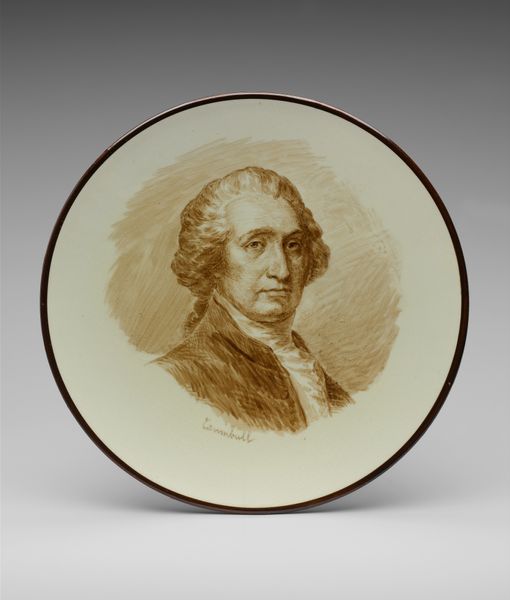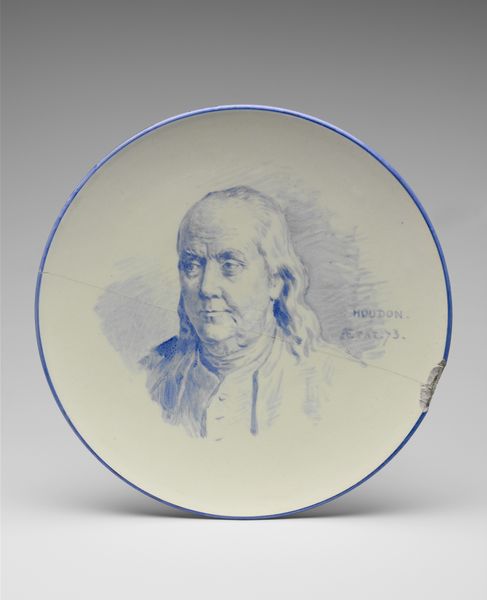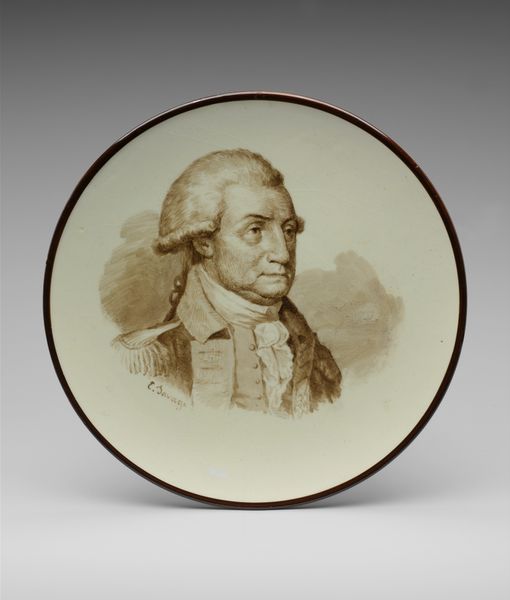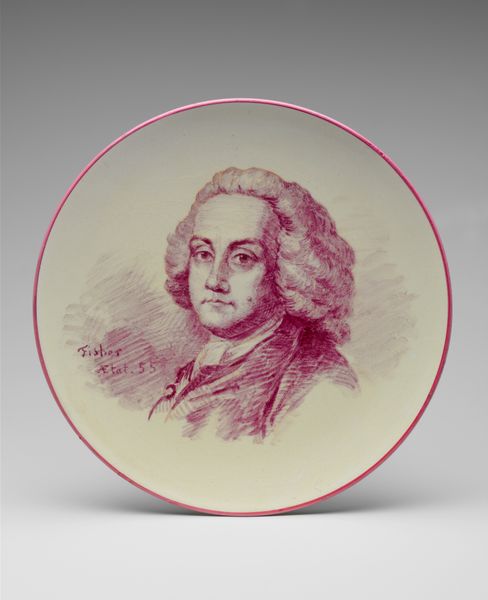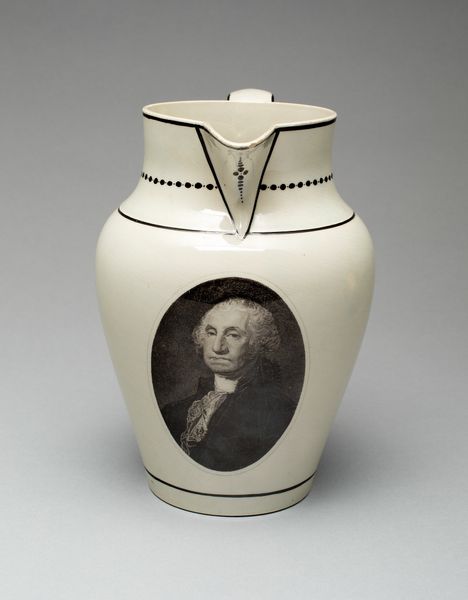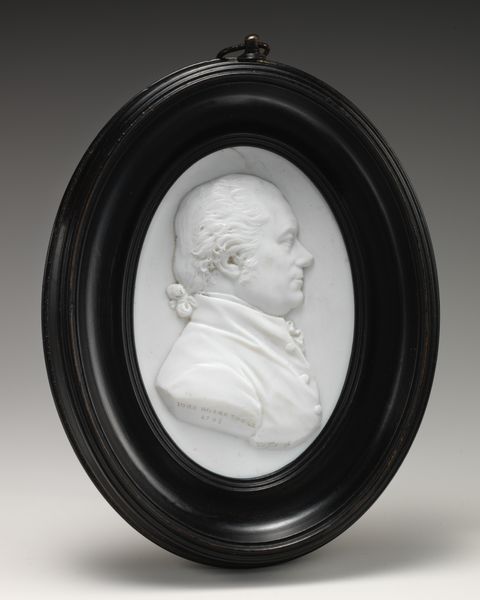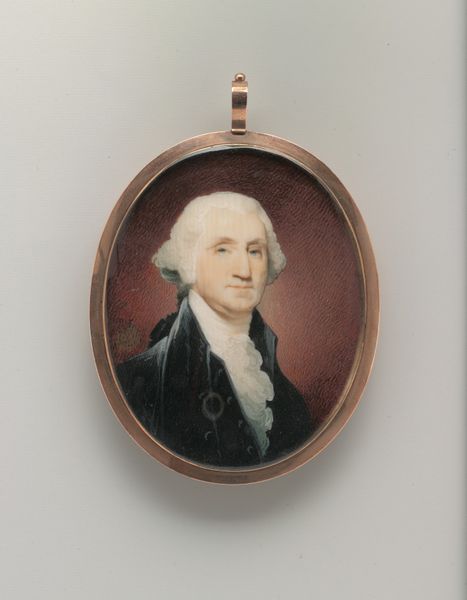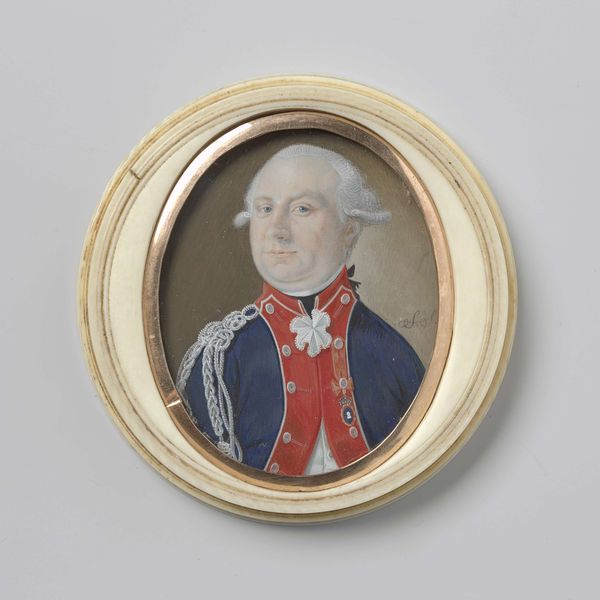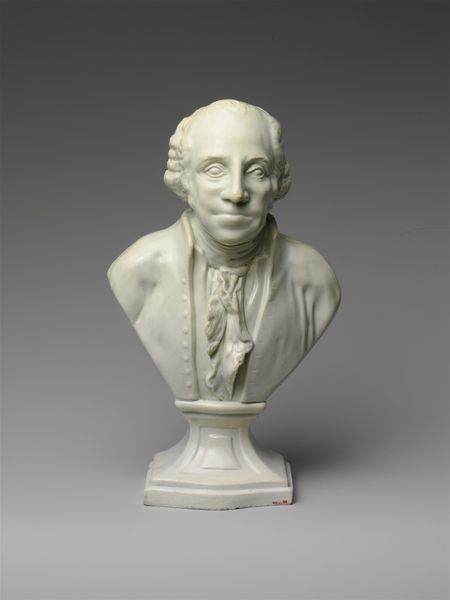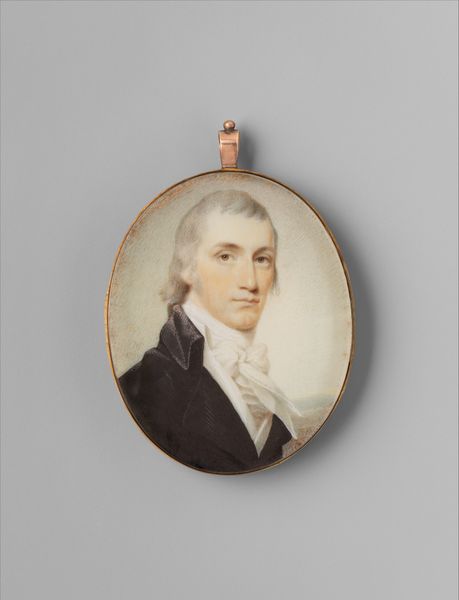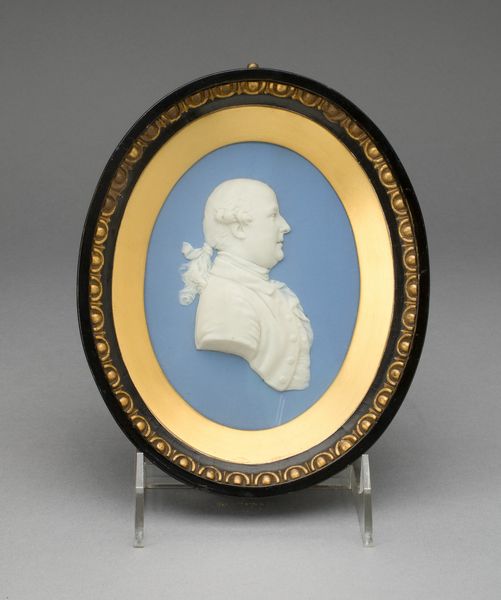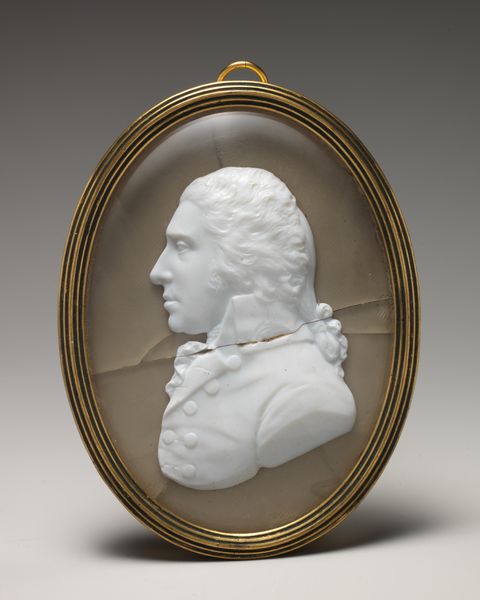
painting, ceramic, pencil
#
portrait
#
painting
#
ceramic
#
pencil
Dimensions: Diam. 8 3/4 in. (22.2 cm)
Copyright: Public Domain
This is Emile Dupont-Zipcy's rendering of George Washington, made on porcelain, sometime between 1822 and 1885. The circular form, with its subdued sepia tones, gives the piece a classical feel, like a Roman cameo. The composition, with Washington's head centrally located, is a study in balance and symmetry. His gaze is direct, his features rendered with a fine, almost neoclassical line that evokes order. The smooth, unglazed surface of the porcelain lends an ethereal quality. Consider how Dupont-Zipcy employs the circular format to frame Washington not just as a historical figure but as a symbol of enduring ideals. The choice of porcelain as a medium and the sepia palette evoke classical portraiture, adding to the artwork’s function as a historical signifier, yet on something as domestic as a plate. This tension is both a celebration and a commentary on the construction of national identity. The piece is less about capturing an exact likeness and more about enshrining an ideal, a process of encoding meaning that remains active as we view and interpret it today.
Comments
No comments
Be the first to comment and join the conversation on the ultimate creative platform.

